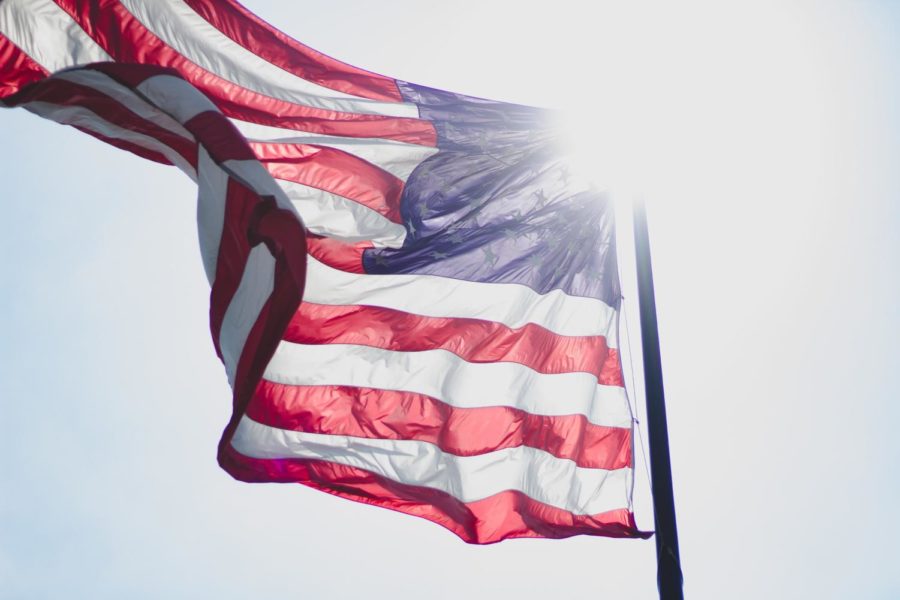Neuschaefer-Rube: America the beautiful? What seems striking!
Columnist Luca Neuschaefer-Rube argues key differences that he has noticed when visiting the United States from abroad.
May 18, 2022
The U.S. is a country that everybody worldwide knows. It is seen as a symbol of freedom and the American dream that anyone can attain success.
But besides these symbols, there are things about “the land of the free” that can seem weird to citizens of other countries.
-
National pride and the military
America the beautiful, the land of the free and the home of the brave. In the United States, pride in the country and the military seems to be constantly present.
The most notable symbol of this pride is the flag of the United States. A poll from YouGov shows that a little more than half of U.S. adults have an American flag at home, often placed in the yard for everybody to see.
This presence of the flag is very uncommon in Europe in general and extremely uncommon in my home country Germany. Obviously also driven by our history, people who present a German flag in their yard are very rare and often presumed to be politically right-wing.
The only exception where every European country presents the flag with pride is during a world cup or European championship. In these few weeks, you can see the flag everywhere.
As the public discussion of Colin Kaepernick and his act of kneeling showed, the flag and the military are deeply connected in the United States. The military and symbols connected to the military are often displayed publicly.
The presentation of the military at sports events surprises me again every time. Soldiers on the stage at the NFL Draft, the jet flying over the Super Bowl stadium or the national anthem before every game always feel strange.
What stays the most fascinating to me are the dimensions of the military in the U.S. In 2020 the United States held about 2.6 million military personnel, excluding civil personnel. All 27 countries of the European Union combined held about 1.9 million military personnel. And this clear difference exists, although the E.U. has more than 100 million more inhabitants than the U.S.
Even crazier are the differences in military expenditures. In 2022 the U.S. expenditures will be $750 billion, according to World Population Review. What isn’t really surprising is that this makes the U.S. rank first worldwide.
But what is striking is that the U.S. expenditures are higher than the countries ranked two to 13 combined. This includes countries like China, Saudi Arabia, India, the United Kingdom or Russia. These 12 countries combined have over 3.7 billion inhabitants, more than eleven times the number of the United States.
-
Public transportation
The United States is one of the biggest countries in the world and has so much to see. From big cities to different beautiful landscapes.
But what I experienced in my time here is that without a car, you are stranded, especially if you don’t want to fly. That is because public transportation is basically non-existent in large parts of the country.
Ames has CyRide, which is a huge advantage, but reaching other cities, even within Iowa, is almost impossible.
After landing in Chicago, the only possibility to reach Ames without a car was a seven-hour bus drive. A railroad connection doesn’t exist. And that although Ames is home to more than 30,000 students.
The U.S. has the largest rail network of all countries in the world. But most parts are only used for the transport of goods. Germany is about the size of the state of Montana but still has a passenger rail network that covers more than the one in the U.S.
This lack of public transportation leads to almost everybody owning a car. While students owning a car are the exception in Germany, it seems to be the other way around in the U.S.
In a future that has to be geared to an eco-friendly lifestyle, the potential for improvement in the U.S. regarding public transport is immense.
-
Units systems
Miles, gallons, pounds and the temperature in Fahrenheit. All these units can be very confusing to visitors from all over the world. During my time in the U.S., a converter app was a constant companion.
Even in science in America, the metric system comes to use.
And still, the U.S. is one of three countries using the imperial system for distances, weight, height or area measurements in everyday life.
The other two countries are Liberia and Myanmar. Both countries are in the process of adopting the metric system right now, which most likely leaves the U.S. to soon be the only country worldwide that has not fully adopted the metric system.
-
Discrepancy in ages
Probably strongly connected to the vital necessity of a car is the extremely young age to drive in the U.S. In Iowa, you are allowed to legally drive a car to school when you are 14 years old. When I think about who my friends and I were when we were 14, I am pretty sure that we shouldn’t have been driving a car.
With four exceptions, the minimum age to drive in European countries is 18 though sometimes supervised driving at 16 or 17 is allowed. I feel like connecting the driving age to adulthood makes sense.
But what I see as especially crazy is the gap between the legal driving age and the legal drinking age. Basically, you can drive a car for seven years before being legally allowed to drink a beer. You can also enroll and die in the military before you are even legally allowed to drink.
I just have the feeling that a few drunken teenagers in a park wouldn’t harm anybody in the way a 14-year-old driving a car could.
While this list could sound very negative, I want to say that there are a lot of things that are exceptionally great about the United States.
2022 is the third time I have had a fantastic time, met a lot of great people and learned a lot. It is not by chance that the U.S. has always been one of the countries I wanted to visit the most.















